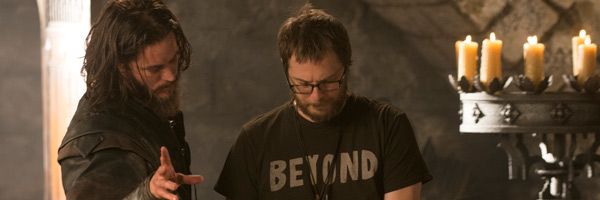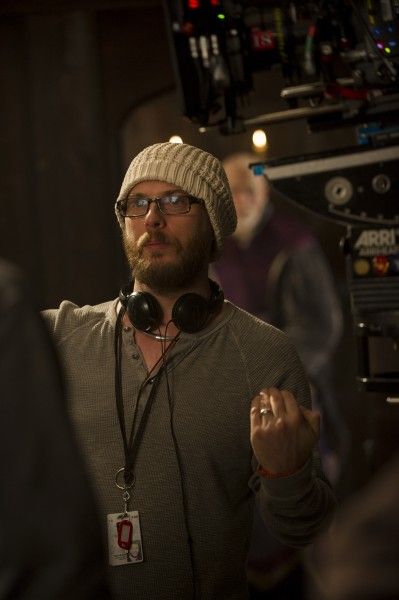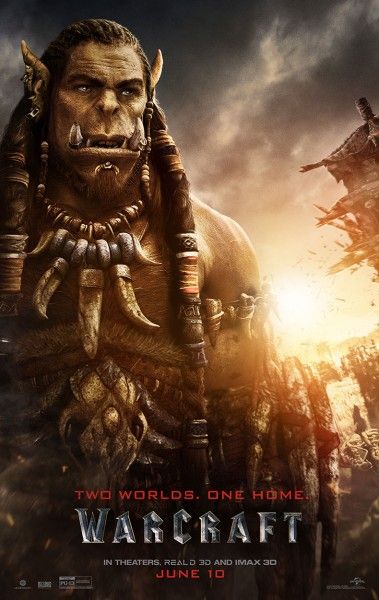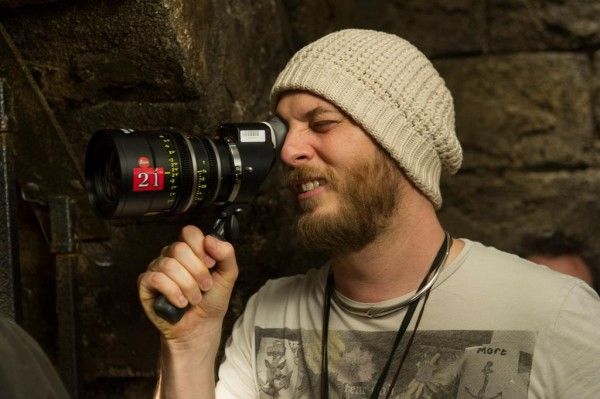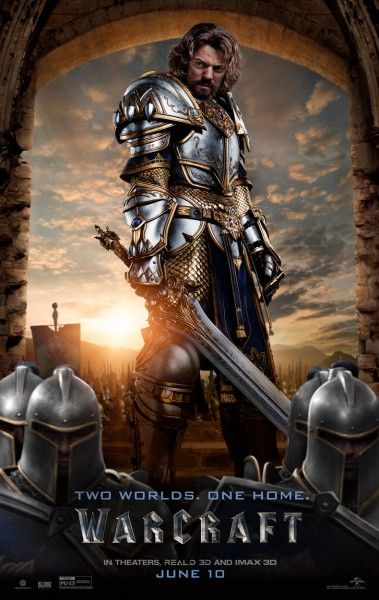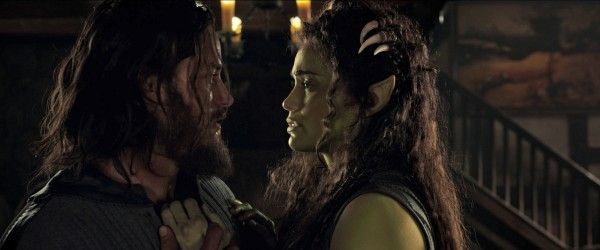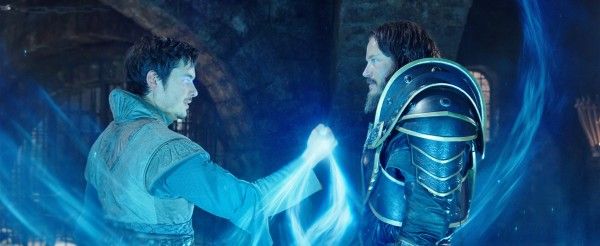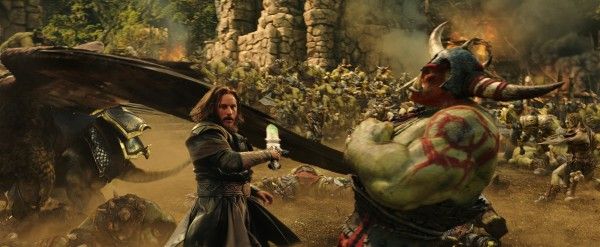Based on Blizzard Entertainment’s global phenomenon World of Warcraft, played by more than 100 million people since its inception, the epic saga Warcraft sees the peaceful realm of Azeroth on the brink of war, as it faces invasion by orc warriors who are fleeing their dying home to colonize another. As one army faces the other, two heroes – human commander Anduin Lothar (Travis Fimmel) and orc chieftain Durotan (Toby Kebbell) – are set on a collision course that will decide the fate of their people and their home. Directed by Duncan Jones, the film also stars Paula Patton, Dominic Cooper, Ben Foster, Ben Schnetzer, Rob Kazinsky, Clancy Brown, Ruth Negga, Anna Galvin and Daniel Wu.
At the film’s press day, Collider sat down with Duncan Jones at the Sheraton Hotel in Universal City to chat about pulling off such a visual spectacular. During the interview, he talked about deciding which aspect of the Warcraft world and mythology he wanted to focus on, why he was attracted to the game, as a player himself, making the story accessible to non-gamers, cutting about 40 minutes out of the film, deleted storyline elements, the most challenging sequence to edit, and how he’d like to continue the story with two more movies. He also talked about his next project, Mute, set in the Moon universe and starring Paul Rudd and Alexander Skarsgard.
Collider: Knowing that more than 100 million players have experienced the mythology of Warcraft, where did you feel the most pressure from and what were you most nervous about getting right?
DUNCAN JONES: I have been a fan since 20 years ago, when the game started. Fortunately, I don’t have to directly listen to 100 million people. I have to work with the team at Blizzard and the producers on the film, and convince them that, as a fan, I have a unique and hopefully entertaining way of taking people through the first contact story, which is really what sets up Warcraft for everyone else. So, we go back to the very first game, with orcs and humans, and show how the orcs lose their home world, have to find a new home, and then end up on Azeroth, this world that already has a pre-existing civilization.
As a gamer who’s played Warcraft for years, what was it about the game that initially attracted you to playing it?
JONES: I played lots of games and I was a fan of gaming, so I was always looking for new games. I was also a science fiction and fantasy fan, growing up, in games and books and movies. I love Tolkien and I love Dungeons & Dragons, so the opportunity to have a fantasy-based RTS, or real time strategy game, at that time, seemed cool. I started playing it, and the early games were simple, but fun and they had these great heroes. And as the games continued to be released, I continued to enjoy it. I think I enjoyed it more, just purely for the strategy element, to begin with. The lore side of it became more interesting to me with World of Warcraft, which was ten years later.
For people who know nothing about Warcraft and are feeling intimidated, wondering if they should see this movie, what should they know, going in?
JONES: When Peter Jackson did The Lord of the Rings trilogy with Fellowship of the Ring, not everyone had read Tolkien, and yet somehow with that scope and the spectacle of that fantasy, people were willing to give it a shot. And when they watched the first one, the characters drew them in and they started understanding the story. And then, all of a sudden, they were The Lord of the Rings fans, even if they never read Tolkien. Hopefully, if people can give me the benefit of the doubt, and they’ll buy a ticket and come see the first movie, I think I can bring them along on a similar adventure.
Did you intentionally choose to start with the orcs before introducing us to the humans, so that we knew just what this world would be?
JONES: If I put the humans up front, my worry was, “Okay, they’re going to bond with these characters, and then the orcs don’t have a chance. I’m going to go all out and put you in a situation where you see a father with his pregnant wife, and he’s worrying about their future, and get you to care about this guy in a big, lingering close-up, so that hopefully you’ll empathize with these characters. And then, we’ll introduce you to the humans.” Fantasy films tend to skew towards what Tolkien fantasy was, which is that the humans, the Hobbits and the cute creatures are the good guys, and everything that’s ugly are the bad guys. One of the things I think is unique and signature about Blizzard is that whenever they do their games, and with Warcraft in particular, they take the things they love and put a twist on it. They showed that heroes can come from the most unexpected places, and as a player, you can play as a hero, on all sides.
What was the length of your first cut?
JONES: It wasn’t crazy. There’s a lot of great stuff that wasn’t in the final cut of the film, and there will be DVDs and Blu-rays, where we can hopefully add those scenes. It was probably about two hours and 40 minutes. It was not a crazy length. Just for the sheer scale of this film – and it’s a big, robust fantasy – you have to be really judicious about how you’re going to shoot it, so there isn’t that much fluff in the editing room. You know, “This is the stuff I absolutely need to tell the story.” Two hours and 40 minutes down to a little over two hours feels like a pretty reasonable contraction.
Did you have to cut any storylines out to reduce the length, or was it more about trimming here and there?
JONES: It was more trimming. There are one or two storyline elements that are not as explained as they used to be. A lot of people who are Warcraft fans continue to wonder, “If Garona is half-orc, how can she be half-human?” There is a good reason for that, but the detail of that is more in the scenes that we weren’t able to put into the film.
What was the hardest or most challenging sequence to edit?
JONES: Not much of it was easy. I think any of those scenes where our main orc protagonists have a direct interaction with our human characters, but not the fights so much. There’s a scene where Durotan and Orgrim, and his team of Frostwolves, walk up and have a parlay with Lothar, King Llane and Garona. That scene was challenging because there’s a language issue that we wanted to play with, and I think we did it successfully. It was based on a technique that I’d seen in The Hunt For Red October, which I thought was very clever, where the commander is sitting on a submarine talking in Russian, and as the camera moves in on him, he slips from Russian into English very organically and you barely notice it. I wanted to do something like that with Durotan speaking in orc, but then, all of a sudden, he’s speaking in English. All of that, with the camera moves, the technology that was going on, and then the language issues, all at the same time, was pretty complex.
If you could go back in time, what would you tell yourself before filming began?
JONES: Back then, I would have said, “You know, this is going to take three and a half years,” ‘cause I didn’t know that back then. It is a marathon, and it requires a level of endurance and stamina to maintain the focus and the quality control. Also, at the same time, you have to be flexible enough to realize that, over the course of making a film for three and a half years, things are going to slightly change and drift, as you work out solutions to each problem as they come up.
Do you know what you’re going to do next, film wise?
JONES: I’m a cruel man to myself. I already know what I’m doing. My wife and I are expecting our first child next month, at the same time that the film comes out, which is weird. We’re going to be going off to Berlin to shoot a much smaller independent science fiction film that is part of my Moon universe. We’ll be doing that, and then shooting that at the end of this year.
Is that something you’ve been thinking about and working on for awhile?
JONES: Yeah, for a very long time. It was meant to be my very first film, and it was just a little too ambitious in scale back then. Now, I can do it, so that’s really good fun.
After Warcraft, it will probably feel really small.
JONES: It will. It will feel really small, absolutely! Paul Rudd, from Ant-Man, and Alexander Skarsgard, the new hunky Tarzan, will be in it with a couple of other people that we haven’t talked about yet.
You’ve talked about envisioning Warcraft as a trilogy, and about envisioning the Moon universe as a trilogy, so you clearly think in trilogies. With Warcraft, do you hope to follow through on that trilogy yourself, or would you prefer to hand that off to someone else?
JONES: The thing is that Warcraft has so much story available to it. For the fans, there are some key stories they really want to see on screen. I won’t be doing those. But, what I really want to get right is that I want to set the foundation for any other Warcraft stuff that happens after this. My trilogy has a pretty clean and useful set-up. The orcs have lost their own world. Durotan has led the Frostwolf clan to a place of safety, but he still doesn’t have a home. By the end of the trilogy, I would hope that we’ve established where the new orc home is.
Warcraft opens in theaters on June 10th.

